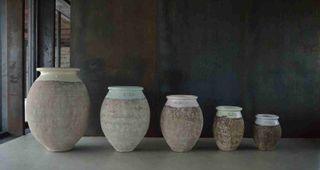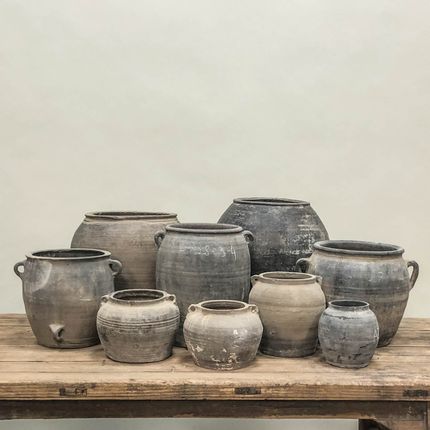Ceramics @Daniel Rozensztroch

Why is there renewed interest in pottery today, both from artisan designers and consumers, who are newly fascinated with the use of ceramics and their long history? It’s all tied to one specific fine material, clay, as well as to certain artisanal skills and a desire to rediscover handmade objects, since mass retail has rendered these utilitarian products completely unremarkable and commodified. Daniel Rozensztroch is interested in the essential excellence of these objects, whether they are for everyday use or simply as collectibles.

A selection from the Evolution series by Daniel Rozensztroch
Daniel is an artistic director, set designer, author of several books, and collector of objects...
Each month, he shares his intuitions and culture, deciphering and translating new lifestyles and highlighting behavioral developments.
See also the product selection "Collection".

A selection from the Evolution series by Daniel Rozensztroch

Daniel is an artistic director, set designer, author of several books, and collector of objects...
Each month, he shares his intuitions and culture, deciphering and translating new lifestyles and highlighting behavioral developments.
See also the product selection "Collection".
Grey Pots
Antique rural pots from Chinese artisans, with a truly contemporary look, in rounded shapes with (or without) two small ear-shaped handles. The grey, matte texture of these one-of-a-kind pieces in varying sizes also differs from one pot to another.
Daniel Rozensztroch
Editorial advisor to interior design magazine Marie Claire Maison, after having been its Style Director for over ten years, Daniel Rozensztroch has also been artistic director of Merci, the renowned shop on boulevard Beaumarchais in Paris, since its opening in 2009. In the 1990's, he participated in the revamp of Nature & Découvertes stores, and, at the end of that decade, the launch of the Résonances retail concept. He has also created the installation design for many exhibits in France and abroad, such the Trend Forum at the Salon du meuble in Paris and several shows on French design at Seibu in Tokyo. And last, but certainly not least, Daniel Rozenstroch is the author of a series of books on the art of living in different lands (Greece, Japan, Central Europe, the West Indies, Spain, New York, and more...), as well as monographs on objects we use every day, including "Hanger" and "Hairbrush". These two books were supported by an exhibit, one at the Musée des Arts Décoratifs and the other at the Bibliothèque Forney, in Paris.









